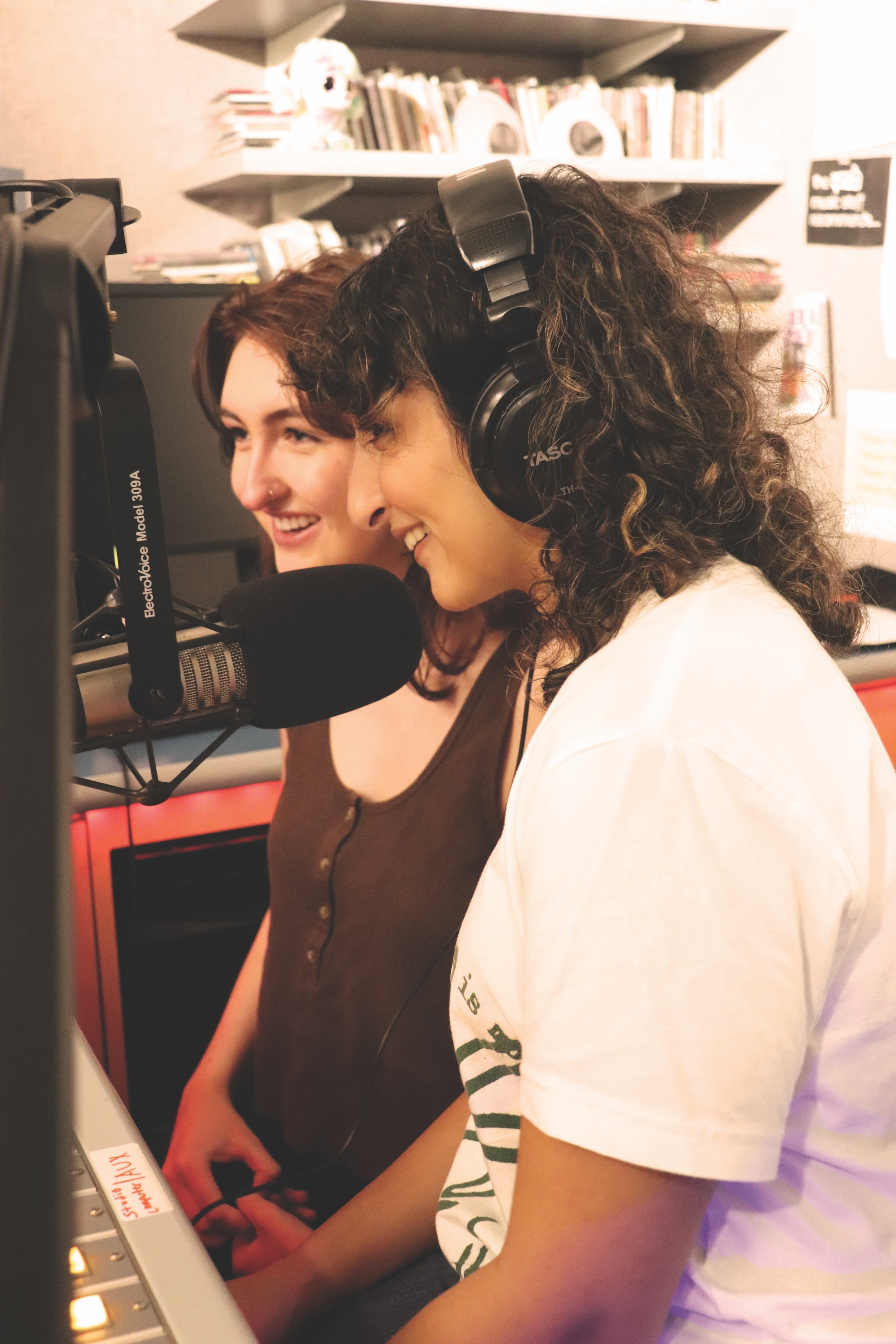The Intimacy of Sound Engineering
Photography by Isa Luzarraga
One of the highlights of being a music lover is the joy of live music. Being in a stuffy venue as your favorite band serenades you with the lyrics you’ve played a million times over in solitude, or switches it up with an extra riff or fill that gives you a rush of adrenaline is a feeling like no other.
All of my favorite memories when consuming music have been those lightning-in-a-bottle, intimate moments you experience in tiny concert halls. I’ve had the chance to watch Gabrielle Aplin go entirely off-mic to perform a song from her debut album, and make eye contact with Dodie as she sang the gut-punching, raw song “Human.” Those moments are what makes music magical and tangible, when you can physically feel the grainy guitar riffs or heavy beats vibrating through you. With concert ticket prices skyrocketing that ineffable feeling seems further than ever, but thanks to a little place called YouTube.com it’s not so distant.
Series like NPR’s Tiny Desk Concert or KEXP master the art of intimate sound engineering making listeners and viewers feel like they are with the artist in these cozy settings.
Mastering the art of enveloping listeners in sound, Josh Rogosin is the mastermind behind NPR’s Tiny Desk breathtaking sound engineering. Rogosin has recorded and mixed over 500 episodes of NPR’s Tiny Desk Concert and spoken extensively of the challenges surrounding capturing the unreplicable magic that the artists create in the studio. He shared in an interview with In The Lab “I love that aspect of it being imperfect [...] something about that magic unpredictability of it, it’s just so uncontrived.” There is an authenticity and unadulterated sincerity to every Tiny Desk Concert and that is all by design and equipment choice. Rogosin shared, “I like having the mic a little further back [from the performers] [...] it's more natural sounding, it gets more of the air. [...] The shotgun mic is so crisp and bright and brings out really natural frequencies of speech because the shotgun mics are designed for speech.” Rogosin is not only capturing the performance but is capturing the sound of the space they are performing in, which is what makes listeners feel they are in the room with the artist.
Sound engineers behind these projects create this sense of intimacy very intentionally. Not just with the listeners through production but also between the performers. Rogosin shared on Reddit, “I direct the artists to play as quietly as possible and to really listen to each other. It’s amazing when you take away the monitors. The entire dynamic changes for the better and the performances are spectacular.” This is the beauty of live music and sound engineers put so much thought behind capturing this unique way of consuming music.
Authenticity is not only strived for in the recording of live performances but also on artists’ official releases. One of my favorite examples of this is Billie Marten’s fourth album Drop Cherries, where she shares in a press release, “Everything was done on tape [...] and unadulterated–the way the relationship that inspired the songs is for me.” Marten spends the duration of this album exploring what authenticity means to her, encapsulating that candor perfectly in the recording. The artist shared her recording process was designed to capture that authenticity, “Where the drums were in the room made a huge difference in how we were playing together. Sometimes it was in the round with three mics and three guitars. Sometimes I was in my separate room, but looking directly at the drummer, Casper, so we had that line of communication and [there was] such power I felt in getting it wrong. It was the joy of making something so completely imperfect.”
Many times, what makes rising artists so beloved by their fan bases is that oftentimes the production is DIY-based. Songs like Conan Gray’s “Idle Town” are instantly recognizable and a fan favorite because of the home-recorded sound. Gray shares, “I recorded [Idle Town] on a crap portable microphone taped onto a broken lamp as a stand” and mixed the song on GarageBand. With every vocal compression or layered vocal you can feel the DIY set-up Gray used for this song. Because of this, he has expressed it would be almost impossible to recreate this sound and he would not want to. “Idle Town” and songs like it are able to serve as a time capsule reflecting an artist’s mindset, skill level, and musical preferences and this is all thanks to how the songs are engineered.
Imperfection and authenticity are oftentimes something you can only experience with an artist in live performances but people like Marten, Gray, and Rogosin are proving that recordings are able to capture raw, unfiltered sound just like our ears are able to, redefining what recorded music can be.

